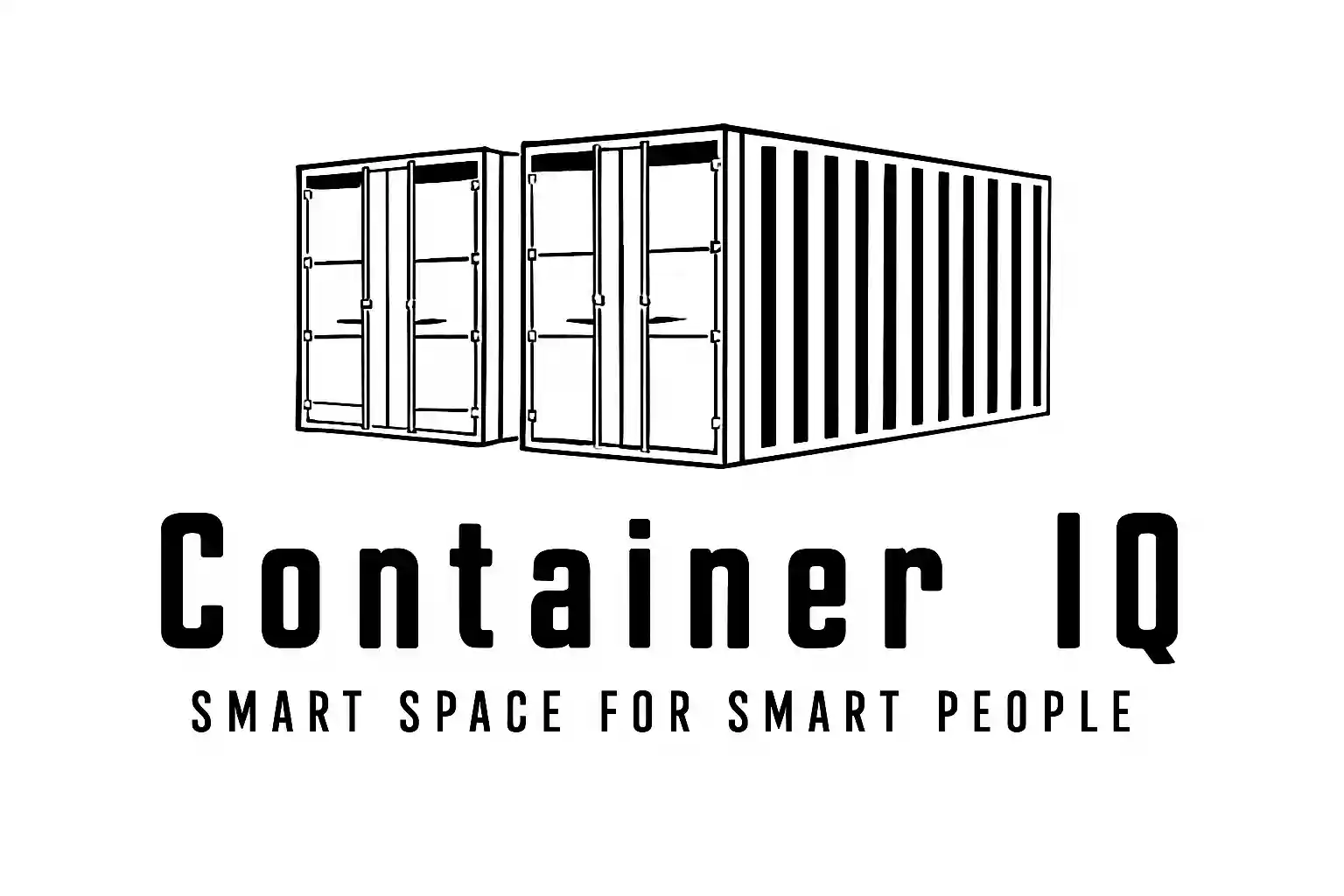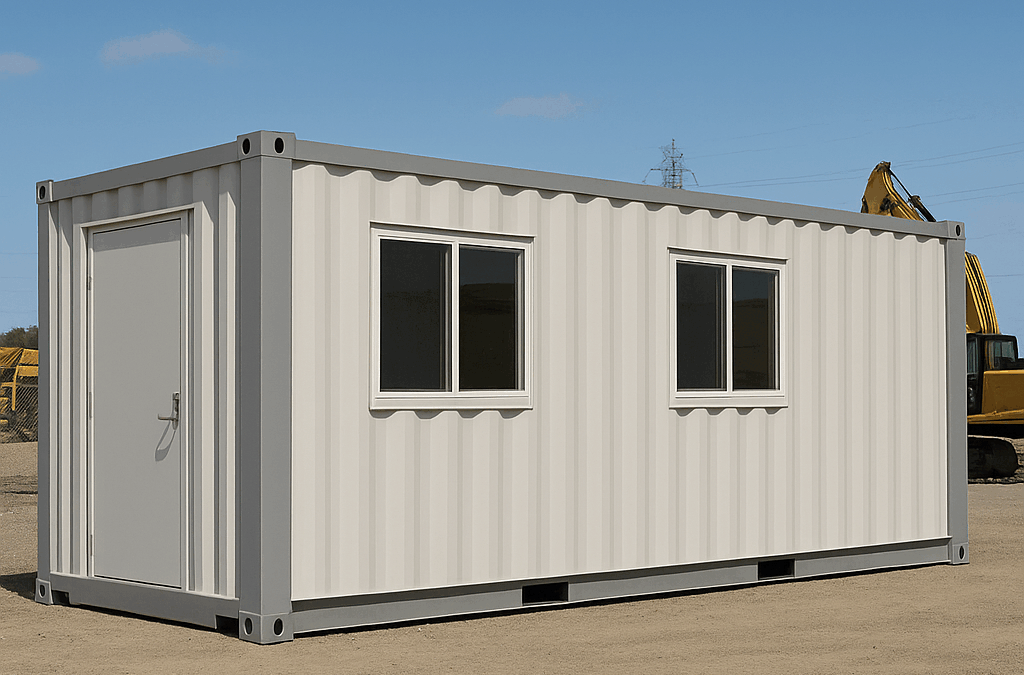Imagine you’re overseeing a large construction site, a mining operation out in the desert, or even a busy logistics yard. You need an office—somewhere secure, climate-controlled, and close to the action. Yet you don’t want to build a permanent brick-and-mortar structure. That’s where container office rentals for industrial sites shine.
These offices—basically retrofitted shipping containers—arrive on-site ready to go. Picture this: you’re standing on dusty ground and within hours, you’ve got a quiet office where you can work on plans, meet the team, or take a break from the heat. They’re practical, rugged, and surprisingly comfortable once outfitted.
Rental is ideal when your site is temporary or if you expect things to shift. No long-term commitment; when the job moves, your office can too. And because the unit is delivered fully built—with wiring, insulation, HVAC, and furniture—you save weeks of setup time.
What You Get When Renting a Container Office
Fast Setup, Zero Construction Mess
One of the most attractive parts of renting is how quickly it all comes together. Most rental providers deliver the container office on a flatbed truck and place it with a crane. It usually takes just a few hours to hook up power, perhaps connect water or internet, and boom—it’s operational.
Contrast that with constructing a temporary site office using local labor and materials. That process can drag on for weeks, involve local permits (if needed), and disrupt your site before anything valuable gets built. With rental containers, you’re operational day one.
Sturdy Enough for Industrial Conditions
Industrial sites aren’t gentle environments. High temperatures, dust, rain, and heavy equipment moving around are just part of the daily scene. Container offices are purpose-built for this—they’re made of steel, sealed to keep out dirt, and often lined with thermal insulation.
Depending on the provider, these units may come weatherproofed and reinforced to be windswept or dust-resistant. Inside, many offer rugged laminate flooring, commercial-grade windows, and heavy-duty doors—all built to work hard and last.
Customizable Workspace, Without Breaking the Bank
When renting, you still have plenty of choices. Do you need a small single-station office with a desk and chair? Or a larger 20‑ or 40‑foot unit for a team of people? Maybe you want split layouts: one side for meetings, the other for filing or break space. Providers often let you select those options right at checkout.
Add-ons commonly include HVAC (essential in scorching or freezing climates), electrical wiring with multiple outlets, lighting upgrades, network wiring or Wi-Fi, and even built-in furniture. Some rental companies offer solar panels or eco-friendly power packs—perfect for remote sites without easy grid access.
Mobility: Move When You Need To
One of the biggest perks of container office rentals for industrial sites is that you can relocate them as your project changes. If the client shifts the work zone or you’re wrapping up an area, the office can travel with you. You avoid losing the value of an investment that’s stuck in one locale.
When the project is done, you return the unit—no storage, no resale headache, no long-term maintenance. If you need more units later—or to downsize—you can adjust flexibly.
Lower Cost and Less Commitment
Renting avoids major capital investment. You don’t need to decide if you’ll need the unit in five years—or where to store it afterward. Rental agreements typically cover maintenance, delivery, pickup, and sometimes even minor repairs, leaving your team free to focus on operations, not upkeep.
How Industrial Teams Actually Use Container Office Rentals for Industrial Sites
Let me walk you through a few typical scenarios:
Construction Site Command Center
You’ve got crew leaders arriving early with tools, engineers reviewing plans alongside the site manager, and weekly check-ins. With container office rentals for industrial sites, everyone has a space to gather, break paperwork down, hold planning meetings, or even lock away gear.
Safety and Compliance Hub
Sites often need a designated safety station—first aid, emergency planning, incident logging. A container office serves as a central safety command hub. It’s secure, clean, and climate‑controlled, which encourages staff to use it as intended.
Remote Mining or Oil Operations
Out in the middle of nowhere, running power and internet might be a challenge. Many rental units come with off-grid power systems—solar panels, batteries, or generators. That means you’ve got a reliable workspace without building new infrastructure in an isolated setting.
Temporary Office While Permanent Facilities Are Built
Say your permanent modular office is delayed—or maybe you’re expanding. In the meantime, you temporarily rent a container to keep admin operations ticking. When your permanent structure is ready, rental units return and stay ready for future use.
What to Look for When Picking a Rental Provider
Not all companies offer the same quality or service, so here are key things to check:
Condition of Units: Are they refurbished or brand-new? Refurbished containers should be inspected for rust, leaks, or damage.
Included Features: Does the rental include HVAC, lighting, insulation, and furniture? Will they install electrical and network wiring?
Delivery and Setup: Do they handle unloading, leveling, and hooking up utilities? Some providers offer full plug-and-play service.
Support: If something breaks, do they respond quickly? Is there a backup unit available?
Compliance: Are your local regulations addressed? Some regions require temporary structure permits—good providers know how to help.
Flexibility of Terms: Can you adjust rental duration, extend or shorten it, or swap units if your needs change?
Anatomy of a Typical Container Office Rental Unit
Here’s a quick breakdown of features you’re likely to find (depends on provider, of course):
Standard Sizes: 10‑foot units for single desks; 20‑foot for small groups; 40‑foot for larger meetings or multi‑desk layouts.
Insulation: Often spray‑foam or fiberglass—helps keep internal temps stable.
HVAC: Split‑unit air conditioner/heater combo is popular.
Electrical: Pre-wired wiring with outlets and overhead LED lighting.
Windows & Doors: Locking personnel doors and tempered‑glass windows—some with security bars.
Furniture Options: Desks, chairs, shelving, whiteboards, partitions.
Connectivity: Ethernet cabling, lease‑line access, or wireless hotspots.
Optional Extras: Solar panels, restroom modules, exterior awnings, staircases for stacked units.
Real-Life Example: How One Team Used Them
A project manager on a large road‑building site recently shared what they did:
They needed ten units for offices and safety stations across a long site. Instead of building temporary huts or renting local cabins, they ordered ten 20-foot container offices, all setup and delivered within two weeks. Each was wired, air-conditioned, and equipped with workstations. The safety team had separate units perched mid-site.
When the project shifted location, the provider used flatbeds to move all units in one go. There was negligible downtime and no cost for dismantling. The manager told me: “We saved four weeks of setup time, and the flexibility mattered more than a permanent building would have.”
Environmental Impact and Sustainability Benefits
Renting container offices is often greener than building temporary structures from scratch. You’re reusing existing steel—no new materials needed. If providers include solar or energy-efficient options, those help reduce reliance on diesel generators or non-renewable power sources.
By avoiding site-built construction, you also reduce construction waste and carbon emission from concrete or lumber manufacturing. For companies serious about sustainability, container rental is a practical step in the right direction.
How to Budget for Rental Container Offices
Here’s what usually affects cost:
Rental Duration: Short-term (weeks or months) tends to cost more per unit but avoids long-term commitment. Longer contracts reduce monthly rates.
Unit Size & Features: A basic 10‑foot office will cost less than a fully outfitted 40‑footer with HVAC, internet, and furniture.
Delivery and Setup: Distance from provider, site access constraints, and utility hookups can affect delivery charges.
Transport for Relocation: Some contracts include relocation; others charge per move.
Maintenance and Insurance: Ask if minor repairs are included; check if you need to insure the unit.
It’s smart to request a quote with all these items broken out. That way you know what you’re paying for, and you can reallocate budget if you need upgrades or less equipment.
What Happens When a Project Ends
When you’re done with the site, you simply schedule pickup. The provider comes and removes the unit, often within a day. There’s no construction to tear down, no demolition waste, and no leftover structure to manage.
If you rented for many months, the provider may do an inspection and charge for wear-and‑tear—but most installations are quite durable so charges are minimal. You’re left with a clean site and no lingering infrastructure.
Tips for Getting the Most Out of Your Rental
Plan Ahead: Even though rentals are fast, reserving a slot early is smart—especially in peak project seasons.
Choose Flat Ground: Set the unit on a firm, level surface, or use support pads to stabilize it.
Check Climate Specs: If you’re working in extreme heat or freezing cold, make sure HVAC and insulation meet those needs.
Bundle Rentals: If you need more than one unit, ask about discounts for multiple rentals.
Test Before Use: When the unit arrives, test electricity, lights, HVAC, and doors before staff moves in.
Keep Security in Mind: Locking systems and barred windows are common; consider adding cameras or external lighting if needed.
Why These Rentals Just Work
Container office rentals for industrial sites strike the perfect balance of speed, convenience, durability, and cost-effectiveness. They let you set up secure, comfortable workspaces fast—in environments where building traditional offices is impractical or inefficient.
You avoid the hassle of construction, long-term ownership, and maintenance. Instead, you get a reliable, customizable workspace that meets your needs and moves as you do. Plus, it’s a more sustainable solution that aligns with modern environmental goals.
Whether you’re building roads, running a mining camp, managing a shipment depot, or handling any industrial operation on a temporary site—container office rentals for industrial sites have got you covered. They make real work easier, and that’s what matters most.
Let me know if you’d like help choosing a provider, estimating costs, or customizing layouts—happy to help further.
if you have any questions or queries, feel free to contact us for more information, or request a free quotation

